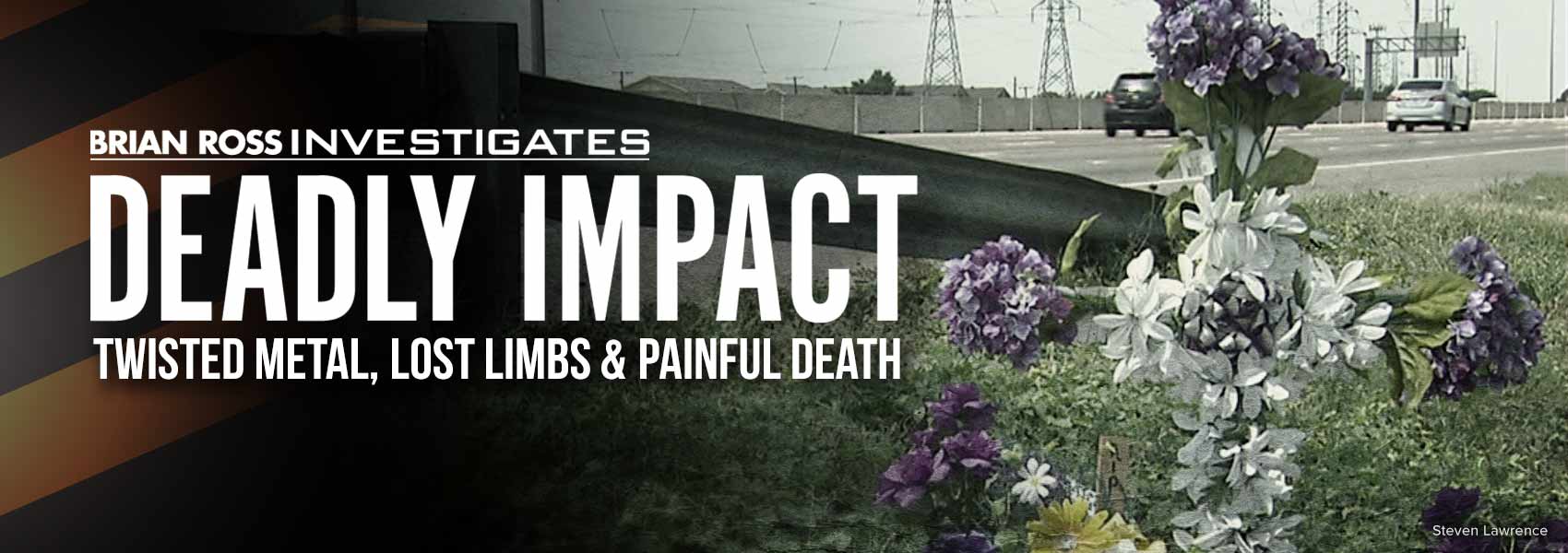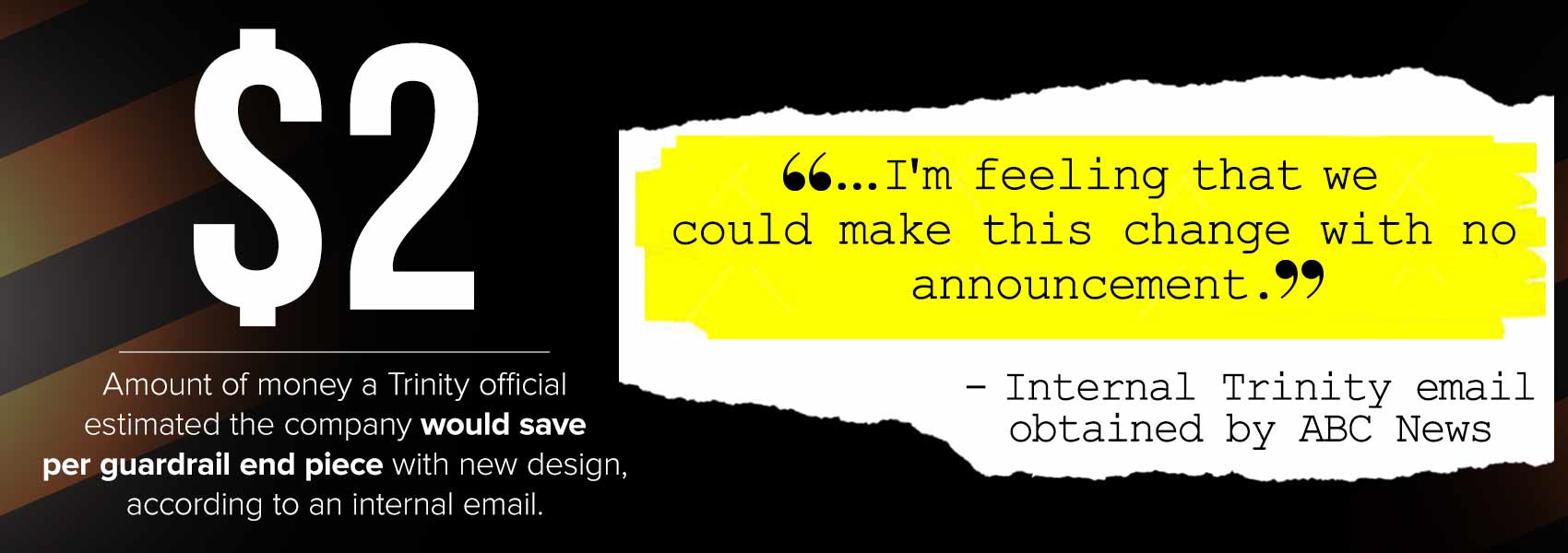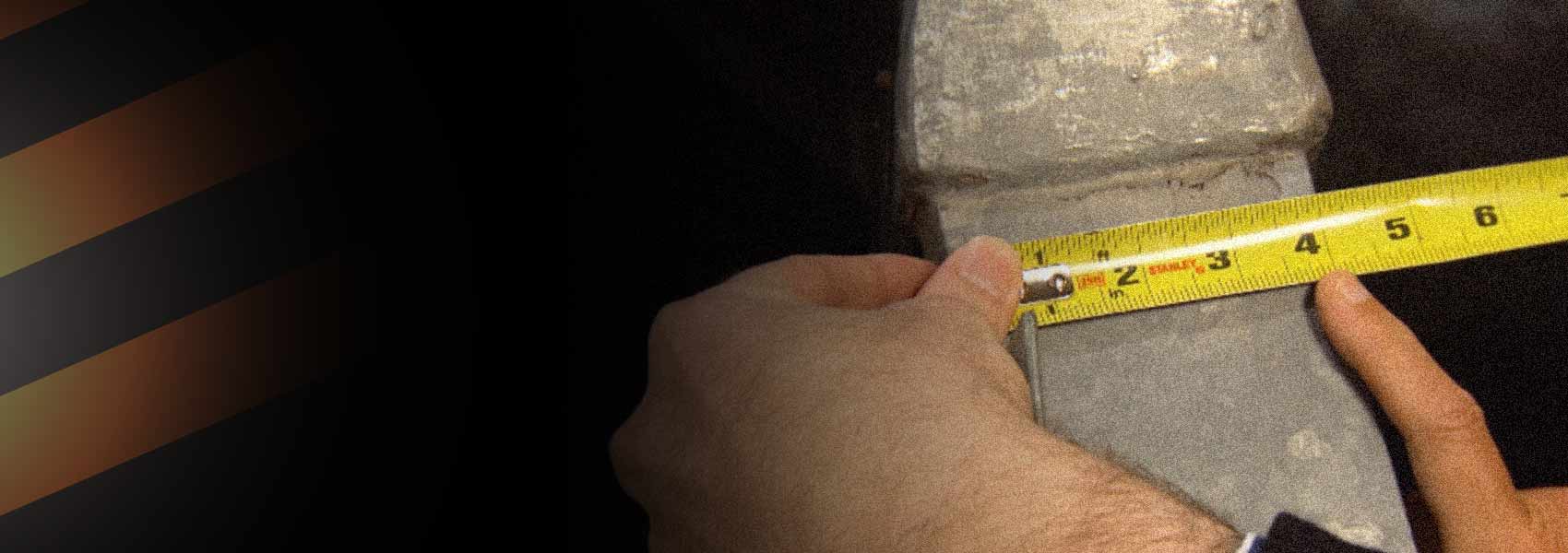
Instead of absorbing the impact and deflecting the metal rail as designed, the guardrail “locked up” and turned into a sharp spear that pierced his vehicle and his body, Traylor told ABC News in an interview to be broadcast tonight on “World News With David Muir” and “20/20”.
“I’m going to die of blood loss,” he whispered to the 911 dispatcher as he went into shock. “I’m not going to make it.”

But Traylor, who served in the Marines, told “20/20” he was able to fashion a tourniquet around the stub of his left leg and survive until a rescue team arrived.
Now Traylor, and a number of other motorists who also lost legs in similar accidents, are suing the guardrail company, Trinity Industries of Texas, alleging its rail end-pieces turned into highway hazards after the company quietly changed the design, shrinking a key piece of metal by one inch, a move that a company engineer said in an internal email would save about $2 for each piece.
“Money is not everything, it’s not,” said Rebecca Dryer who lost her right leg when she drove into a guard rail in Pennsylvania five years ago.

She is also suing Trinity and speaking publicly in an effort to get the company to remove the suspect pieces of equipment from the road.
“Cause how many more people do you want to lose limbs and go through all of this?” she told ABC News.
Highway safety experts estimate there are hundreds of thousands of the redesigned Trinity guardrail end terminals on highways in almost every state in the country.
The company says the redesigned guardrail pieces meet all federal standards and have passed two different sets of crash tests.
The change Trinity made to its guard rail in 2005, which involved shrinking a key piece from five inches to four inches, was not revealed to the Federal Highway Administration at the time.
In an internal Trinity e-mail, obtained by ABC News, a company official writes, “I’m feeling that we could make this change with no announcement.”
ORIGINAL DOCUMENT: Trinity Email

Trinity told ABC News that “because this was not a change that affected the performance of the system or end users’ installation or maintenance of the system, Trinity did not feel an independent announcement was necessary.”
“The ET-Plus systems manufactured after September 2, 2005 (with four-inch guide channels) are installed and maintained in the exact same fashion,” the company said.
As for turning the required design documentation over to the Federal Highway Administration, the company said they were “inadvertently omitted.”

Government officials say they only became aware of the change seven years later when one of Trinity’s competitors, Josh Harman, learned of it in the course of a lawsuit and notified the Federal Highway Administration.
“These devices are designed -- are supposed to save your life. And they are not,” Harman told ABC News.
Trinity officials call Harman a liar and an opportunist, out to make a buck by stirring up frivolous lawsuits.
He says he’s out to prove a rash of accidents are tied to the guardrail changes kept secret from the government.
“No, none of this was disclosed. Absolutely none of this,” Harman said. “It’s killing people. That’s the most important thing.”
When questions were raised about the redesigned guard rails by the Federal Highway Administration, Trinity turned over two sets of safety tests it had performed.

Highway officials accepted the results, despite the undisclosed changes and the gruesome accidents.
Nick Artimovich, an engineer at the Office of Safety Technologies for the Federal Highway Administration, told ABC News the decision to accept Trinity’s findings was made “based on the evidence that was presented” to the officials. When asked if the guard rail heads were safe, Artimovich said, “Safety is a relative matter” and that “they have met the crash testing, as required.”
The fact is, on a high-speed highway, any guardrail or stationary object presents a potential hazard.
Trinity says the aftermath pictures of the fatal and serious accidents don’t prove anything, that each accident has its own unique circumstances and that their product has a proven record of safety. Trinity has a “high degree of confidence in the performance and integrity” of the ET-Plus System, the company said.
Even so, federal highway officials told “20/20” this week that a nationwide review of the safety of all guardrails will begin soon.
[Update Oct. 21, 2014:]
Just over a month after ABC News’ “20/20” investigation, a jury in Texas found that Trinity Industries had defrauded the U.S. government by selling states a different product – the modified guardrail end piece -- from the one the states believed they were buying. Trinity was ordered to pay $175 million in damages – a figure that is expected to triple to more than half a billion dollars by statutory mandate. Most will go to the government but approximately a quarter will go to Harman, who brought the suit. Trinity said it intends to appeal the decision.
Read Original Trinity Statement



ABC News' Angela M. Hill, Lee Ferran, Alexander Tucciarone and Alex Hosenball contributed to this project. Published Sept. 19, 2014.

